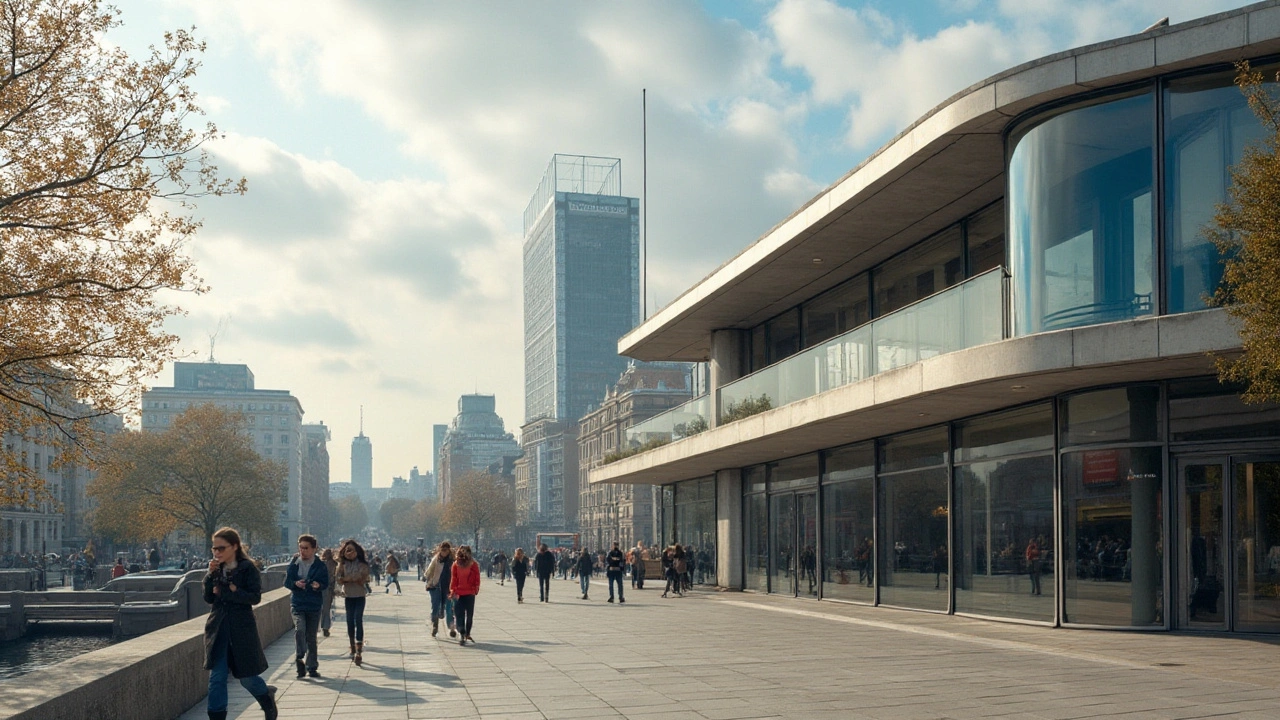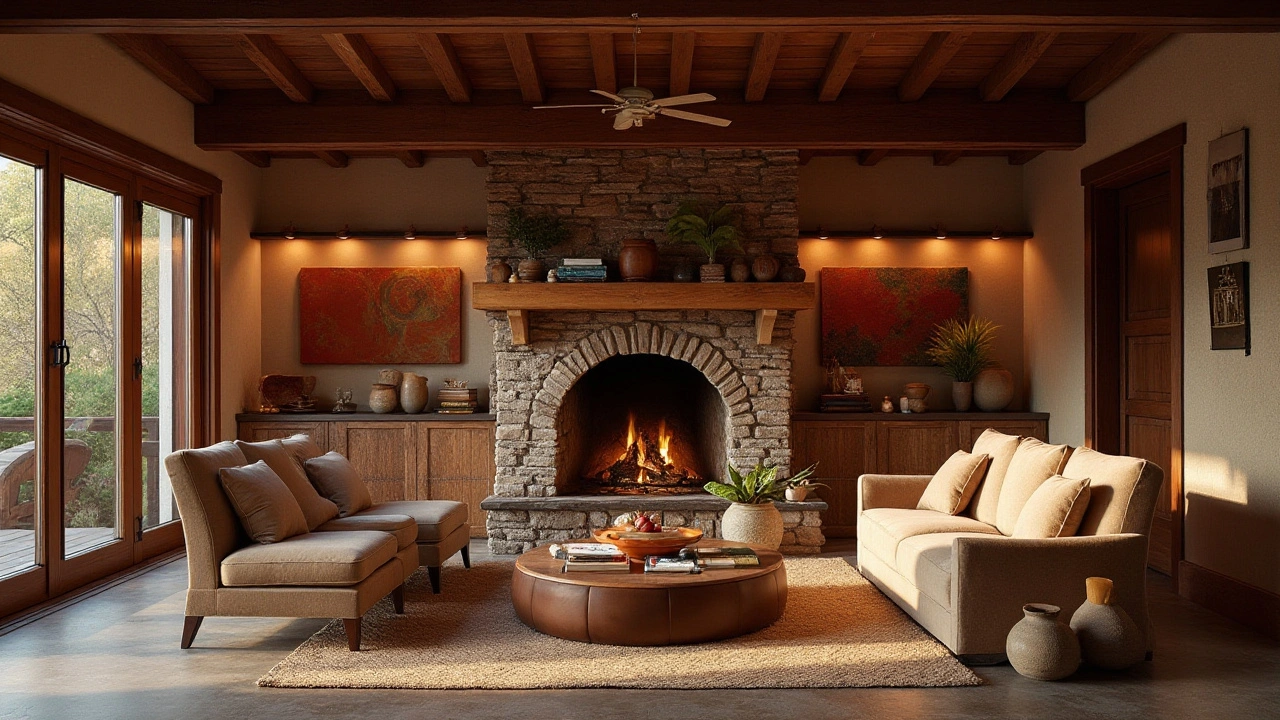International Style is a globally recognized architectural and design movement that emphasizes open interior spaces, industrial materials, and simple, clean lines. Originating in the 1920s and 1930s, it has significantly influenced structures worldwide, leaving a mark on both public and private buildings. This style is known for its versatility and how it adapts to diverse cultural aesthetics. By exploring its key elements, one can appreciate its impact on modern design and architecture. This article delves into the origins, characteristics, and influence of International Style, offering insights into its enduring appeal.
October 2024 Archive - Architecture and Design Highlights
Which architectural ideas stood out in October 2024? This month’s archive collects nine posts that mix history, clear how-tos, and design inspiration. You’ll find two deep looks at the International Style, two pieces on American Craftsman homes, and focused essays on Tudor influence, Neo-Futurism, Postmodernism, Colonial architecture, and Byzantine marvels. Each post aims to show practical takeaways you can use in design or renovation.
What the posts cover
International Style appears twice and keeps showing why it still matters. The articles trace its 1920s roots and highlight key traits: open interiors, simple geometry, industrial materials, and light-filled volumes. If you need a quick rule: let structure be honest and use light and space to make plans feel larger. Both posts suggest using exposed elements and minimal ornament when clarity is the priority.
The American Craftsman features practical, human-centered design. Expect notes on built-ins, visible joinery, natural materials, and large hearths. These articles give direct tips—add smart storage, use warm wood finishes, and favor handcrafted touches in small rooms to boost comfort without big renovations.
Tudor influence is shown as a source of proportion and texture rather than full revival. Look for steep gables, decorative timbering, and masonry contrasts used sparingly. The advice: borrow a motif or silhouette, then pair it with modern materials so the design reads fresh and intentional.
Neo-Futurism and Postmodernism offer two different design moves this month. Neo-Futurism pushes bold forms, tech-friendly materials, and sustainability together. Use it when you want a strong, future-forward statement or adaptive systems. Postmodernism reminds you that color, irony, and layered references can give spaces personality. The practical point: apply these ideas selectively to avoid visual overload.
Colonial and Byzantine pieces round out the archive with lessons in proportion and craft. Colonial design gives clear, climate-smart planning and symmetry that still works for today’s neighborhoods. Byzantine writing highlights domes, mosaics, and structural ingenuity that can inspire ceilings, entries, and decorative details. Both posts recommend sensitive preservation and thoughtful reuse instead of exact copying.
Simple takeaways you can use now
Prioritize light and honest materials. Add built-ins that solve real storage problems. Use historical motifs as accents, not full templates. If you want bold, pick one strong idea—roofline, façade detail, or interior volume—and develop it. For renovations, focus on clarity of plan and durability of materials; small craft details will add long-term value.
Want to read the full articles? Browse the October 2024 archive for images, case studies, and step-by-step tips. If you’re renovating or sketching ideas, these posts give both context and usable rules to shape projects without getting lost in trends.
American Craftsman homes offer an alluring blend of classic design and practical functionality. Known for their quality craftsmanship and attention to detail, these houses evoke a charming and inviting atmosphere. Born from the Arts and Crafts movement, they emphasize handcrafted elements over industrial production. With features like built-in furniture, large fireplaces, and exposed beams, Craftsman homes cater to those who appreciate artistry and authenticity in architecture.
Tudor architecture, originating in the late medieval period of England, continues to cast a significant influence on modern design. Characterized by its distinctive timber framing, steeply pitched gables, and elaborate masonry, Tudor style finds its echoes in contemporary homes worldwide. By blending historical elements with modern sensibilities, it provides a timeless charm and functionality. The article explores this fascinating architectural evolution and offers insights into integrating Tudor influences into today’s design landscape.
Neo-Futurism is shaping the landscape of contemporary art by blending futuristic aesthetics with visionary design. This art movement challenges traditional forms, embracing bold architecture and technology to reflect a harmonious future. It's a journey that compels artists and architects to imagine an innovative world while addressing environmental and social concerns. Delve into how Neo-Futurism is influencing today's artistic creations and the dynamic interplay between structure and imagination.
Postmodern architecture, which emerged in the mid-20th century, is known for its diverse styles and challenging of traditional norms. This style incorporates a mix of historical references, bold forms, and playful elements. The movement stands out for its emphasis on embracing complexity and contradiction, often seen in the unexpected juxtapositions seen in the buildings. Through playful colors, shapes, and materials, postmodern architecture creates distinct and memorable spaces.
The International Style in art and architecture marked a significant shift in design philosophy during the 20th century. By focusing on simplicity, volume, and the absence of ornamentation, it transcended borders to become a universal language in the creative world. This article delves into its evolution, key characteristics, and notable examples globally, offering insight into how it shapes modern aesthetics.
Colonial architecture, with its distinct blend of European influences and local adaptations, remains significant today as it enhances contemporary design and urban planning. Its emphasis on symmetry, simplicity, and functionality lends itself to modern aesthetics, while also offering sustainable solutions and cultural depth. As cities grow, understanding and integrating colonial architectural principles can address environmental and social challenges. By preserving these structures, we maintain historical continuity and celebrate diverse cultural influences.
The American Craftsman style, which emerged in the late 19th century, continues to influence modern home design with its emphasis on craftsmanship, simplicity, and natural materials. This architectural approach is cherished for its warm, inviting aesthetics that blend functionality with artistry. Many homeowners and designers value the style for its timeless appeal and versatility. Modern interpretations incorporate contemporary needs while retaining the essence of this beloved tradition.
Byzantine architecture represents a fusion of eastern and western elements, leading to grand and intricate designs that still captivate the modern world. This era gave rise to iconic structures rich in symbolism and technical innovation. By delving into its history, one can appreciate the unique characteristics and cultural significance of these architectural masterpieces.









